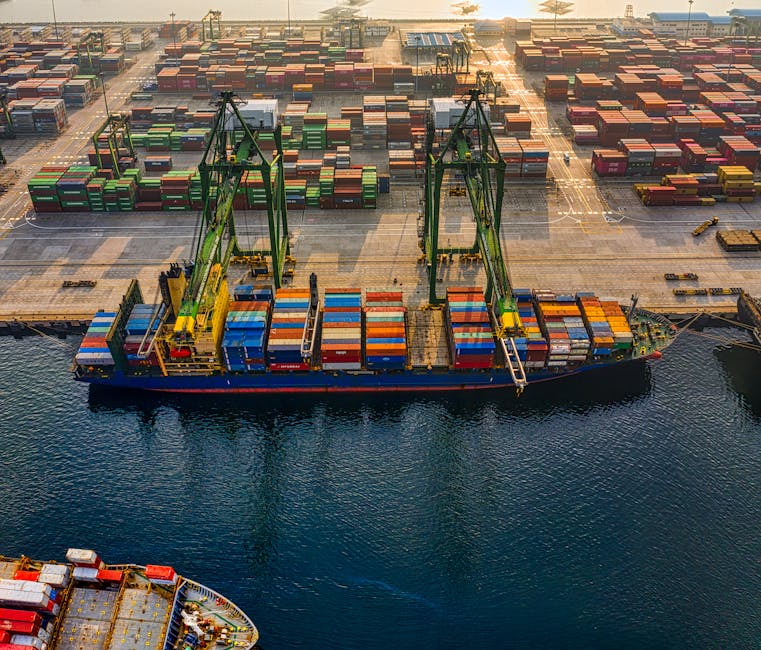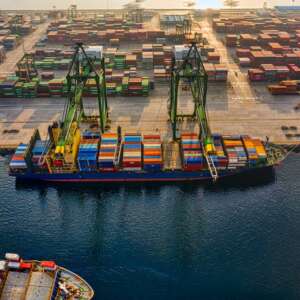Introduction to Over Dimensional Cargo Transportation
Over Dimensional Cargo Transportation, often simply called ODC, is all about moving big stuff. Think massive machinery, huge construction materials, or anything that can’t fit in a standard truck. It’s not your everyday shipping task. Instead, it’s for items that make you think, “How on earth do they move that?” When we say big, we mean too long, too wide, too tall, or too heavy for regular transport. To move these giants, special permits, planning, and equipment are needed. It’s a complicated dance of logistics, legalities, and safety measures to ensure everything goes smoothly from Point A to B. Whether it’s a wind turbine blade or an industrial boiler, ODC is how these behemoths get to where they need to be.
Understanding Over Dimensional Cargo: Definitions and Examples
Over Dimensional Cargo, or ODC, refers to goods that exceed the standard dimensions set by traffic guidelines. These aren’t your average packages. Think of them as the giants of the transportation world. Items too tall, too long, or too wide for standard trucks, trains, or ships fall into this category. For example, wind turbine blades stretching longer than a football field, massive construction machinery towering over traffic lights, or enormous storage tanks that look like they should be part of a cityscape, not moving down the highway. ODC requires special handling, permits, and routes because of its sheer size and weight. Navigating through cities or over bridges with these behemoths is no small feat. It’s like fitting an elephant through a doorway – it requires planning, precision, and a lot of patience. Understanding what qualifies as Over Dimensional Cargo is the first step in tackling the logistical challenges it presents.
Key Challenges in Transporting Over Dimensional Loads
Transporting over dimensional (OD) cargo is like trying to fit a square peg into a round hole; it’s tricky and demands special attention. The key challenges start with size and weight. These beasts stretch beyond regular dimensions, making it hard to move them through standard routes. Imagine driving a car that’s too wide for the lane or too tall for an underpass. That’s daily reality in OD transportation.
Permits are another hurdle. Each state or country has its own set of rules for OD loads. Getting the right permits is a maze. Miss a detail, and you could face delays or hefty fines. It’s like planning a road trip but needing special permission to drive on certain roads.
Safety can’t be overlooked. Moving heavy and oversized loads means a higher risk of accidents. Drivers need ninja-like skills and loads of experience. Plus, each load requires custom securing measures. It’s not just about strapping it down but ensuring it won’t make a move, regardless of the bumps on the road.
Lastly, route planning with OD cargo is a game of chess. You need to consider road conditions, bridge capacities, and height restrictions. It’s about plotting a course that avoids obstacles, sometimes taking the long way around just to ensure the load arrives intact.
In sum, transporting OD loads is no small feat. It’s about juggling size, weight, permits, safety, and smart route planning. Each load is a puzzle, and the goal is clear: deliver it safely without breaking the bank or the law.
Planning and Preparation: Essential Steps for Smooth Transportation
Before you even think about moving oversized cargo, planning and preparation should be your top priorities. This isn’t something you can wing; every detail matters. Firstly, know the exact dimensions and weight of your cargo. Sounds obvious, right? But getting this wrong can turn a straightforward job into a logistical nightmare. Next up, choose the right transport method. Whether it’s by road, sea, or rail, each option has its own set of rules and challenges. Now, let’s talk permits. For oversized loads, you need special permits that vary from place to place. Without these, you’re not going anywhere. And don’t forget about route planning. You need a path that can handle your load’s size and weight, avoiding any low bridges or weak roads. Lastly, consider hiring professionals. They know the ins and outs of this business and can navigate the complexities for you. In short, plan meticulously, prepare for hiccups, and always think one step ahead. This approach will save you time, money, and a whole lot of stress.
Regulatory Compliance and Permits for Over Dimensional Cargo
When it comes to moving over dimensional cargo, understanding and adhering to regulations is key. Each state or country you plan to move your oversized load through may have its own set of rules. Generally, over dimensional cargo, which is too large to fit the standard size of transport modes, requires special permits before hitting the road. Getting these permits is not just a formality; it’s a necessity. They inform authorities about your transport plans and ensure that your cargo moves without causing safety or infrastructure problems. The process involves specifying the dimensions of your load, the route you plan to take, and sometimes the time you’ll be traveling. Authorities might also require escorts or pilot vehicles for added safety. Remember, skipping on permits or not following guidelines can lead to hefty fines or interruptions in your transport schedule. So, always make compliance your first step when planning the transportation of over dimensional cargo.
Choosing the Right Transportation Mode for Over Dimensional Goods
When it comes to moving over dimensional goods, picking the right mode of transport is key. This isn’t your usual package delivery. We’re talking big, bulky, sometimes really heavy stuff that doesn’t fit in a standard truck or container. Here’s how to nail down your choice. Road transport is often the go-to. It’s flexible and can get your cargo directly to where it needs to be. But, roads have their limits and so do the vehicles on them. Think about weight limits, bridge heights, and road widths. Sometimes, the road just won’t cut it. That’s when you might look up, literally, to air transport. It’s fast, yes, but it’s also pricey. And while size and weight limits are less of a hassle, they still exist. So, not everything big can fly. Rail transport is another option. It’s great for heavy stuff and long distances. Trains can handle a lot but planning is crucial. You need to make sure there’s a rail line going to your final destination, or at least somewhere close. And then there’s sea transport. It’s the king of moving big stuff. Ships are made to carry massive loads. Plus, it’s cost-effective for long distances. However, it’s slow and depends a lot on the weather. So, choosing the right mode of transport for your over dimensional goods comes down to balancing costs, timing, and the physical limits of each transport mode. Think about what you’re shipping, where it’s going, and how quickly it needs to get there. Then, match those needs with the strengths of road, air, rail, or sea transport.
Routing and Scheduling for Over Dimensional Deliveries
Routing and scheduling oversized loads isn’t a walk in the park. Think of it like trying to thread a needle while wearing boxing gloves. These loads defy the norm with their massive size, making the usual routes often a no-go. The goal is to find roads that can handle the weight and size without causing a scene or damage. It’s a big puzzle that requires a lot of thinking and planning. Here’s the drill: Each state or region has its own set of rules for over dimensional cargo. Imagine trying to play a game where every few miles, the rules change. That’s what it’s like. Plus, you’ve got infrastructure to worry about. Not every bridge or tunnel can handle the monster loads we’re talking about. Then, there’s timing. Some routes only welcome oversized loads during specific times or under certain conditions. Nighttime or weekend travel might be the only option to minimize the upheaval in traffic flow. Every detail matters, from the route’s length and the required permits to escort vehicles and road conditions. All these variables mean routing and scheduling for over dimensional deliveries is a complex task that demands expertise, patience, and a knack for solving tough puzzles. Getting it right ensures the cargo gets where it needs to go, safely and efficiently, without turning the journey into an oversized headache.
Safety Measures and Precautions in Over Dimensional Cargo Transport
When moving over dimensional cargo, safety is top priority. Imagine you’re driving behind a truck carrying something way taller or wider than usual, like wind turbine blades. You’d want to be sure they’ve done everything to keep it secure, right? That’s what safety measures and precautions are all about in this game.
First off, every journey starts with a detailed plan. It’s not just about plotting the route on a map; it involves checking bridges for weight limits and underpasses for height restrictions to make sure the cargo fits. No one wants to make the evening news because they got stuck under a bridge.
Then, there’s the gear. Specialized trailers that can handle the weight and size of the cargo are a must. These aren’t your everyday trailers but high-tech equipment designed for heavy lifting and balancing act.
Lights and markers are also key. Oversized loads must be well-marked with flags, banners, and lights. This isn’t just for show. It’s to make sure everyone on the road can see the cargo coming and give it plenty of room.
Escort vehicles often lead the way, especially for the really big stuff. They’re like the cargo’s personal bodyguards, making sure the road ahead is clear and communicating with the truck driver to make any necessary adjustments.
Lastly, regulations are the rulebook. Every state or country has its own set of rules for transporting oversized cargo, and sticking to these is non-negotiable. From permits to police escorts, dotting the i’s and crossing the t’s ensures that the cargo arrives safely without any hiccups.
In short, when it comes to over dimensional cargo transport, leaving things to chance is not an option. Planning, proper equipment, visibility, and following the rules are the pillars that keep these giant shipments, and everyone around them, safe.
Real-Life Examples: Success Stories in Over Dimensional Transportation
In the world of transport, moving oversized cargo is a high-stakes game. But, when done right, it’s a game of impressive wins. Take the story of the company that managed to transport a 200-ton generator from a warehouse in Germany to a power plant in the UK. They used a combination of specialized trailers, detailed route planning, and even modified road infrastructure to get the job done. Coordination with local authorities ensured a smooth passage, and the generator was delivered on time, without a scratch.
Another success tale comes from the seas, where a shipping company engineered a unique float-on, float-off operation to move an entire oil rig across the Atlantic. By submerging the transport vessel to allow the rig to be floated on, then raising it for transport, they tackled what seemed an impossible task with creativity and precision.
Then, there’s the aerospace giant that routinely navigates the complexities of transporting airplane parts. Using a fleet of custom-built transport aircraft, they can move wings, fuselage sections, and even entire planes from factories to assembly lines worldwide. Their success hinges on a mix of advanced logistics, engineering, and global coordination.
These stories aren’t just about moving big things from point A to B. They highlight innovation, teamwork, and the relentless pursuit of solutions in the face of logistical giants. Each project adds a chapter to the playbook of over dimensional transport, proving that with the right approach, even the most daunting cargo challenges can be turned into success stories.
Conclusion: Best Practices and Future Trends in Over Dimensional Cargo Logistics
In wrapping up, mastering over dimensional cargo logistics calls for a mix of vigilance, flexibility, and forward-thinking. Emerging trends highlight the increasing use of technology, like GPS tracking and real-time monitoring, to enhance route planning and cargo safety. Simultaneously, a shift towards more sustainable transportation methods is gaining momentum, encouraging companies to consider eco-friendly options. Best practices in this field emphasize the importance of thorough planning and collaboration with experienced partners. By prioritizing detailed preparation, staying ahead of technological advancements, and focusing on sustainability, companies can navigate the complexities of oversized cargo transportation effectively. Looking forward, the industry is set to become more efficient and environmentally responsible, with a strong reliance on innovation to tackle future challenges.





